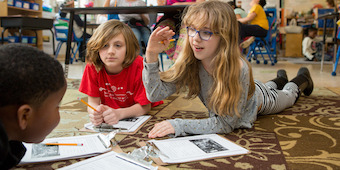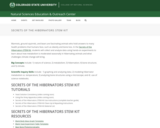
A very short video introduction to how photosynthesis cycles energy through an ecosystem and a "real-world" application of ratios! Lindsay Hollister, JPPM's horticulturalist, taps a black walnut tree for its sap and park staff boil it down to create syrup. Included in this video are an animated food web showing the directions of energy flow during photosynthesis and when sap is "rising," which can be extended by students to include humans or more parts of their local ecosystem. Use the video as an introduction to activities about sugar and biological storage, and an excuse to sample maple syrup to taste the sugar. Alternatively, research trees nearby students could help tap and witness the biological transfer of energy themselves.
Always be sure you can successfully identify a plant before using it and take precautions to avoid negative reactions.
This resource is part of Jefferson Patterson Park and Museum’s open educational resources project to provide history, ecology, archaeology, and conservation resources related to our 560 acre public park. More of our content can be found here on OER Commons or from our website at jefpat.maryland.gov. JPPM is a part of the Maryland Historical Trust under the Maryland Department of Planning.
- Subject:
- Biology
- Botany
- Comprehensive Health and Physical Education
- Life Science
- Nutrition
- Material Type:
- Case Study
- Diagram/Illustration
- Provider:
- Jefferson Patterson Park and Museum
- Date Added:
- 04/11/2023



